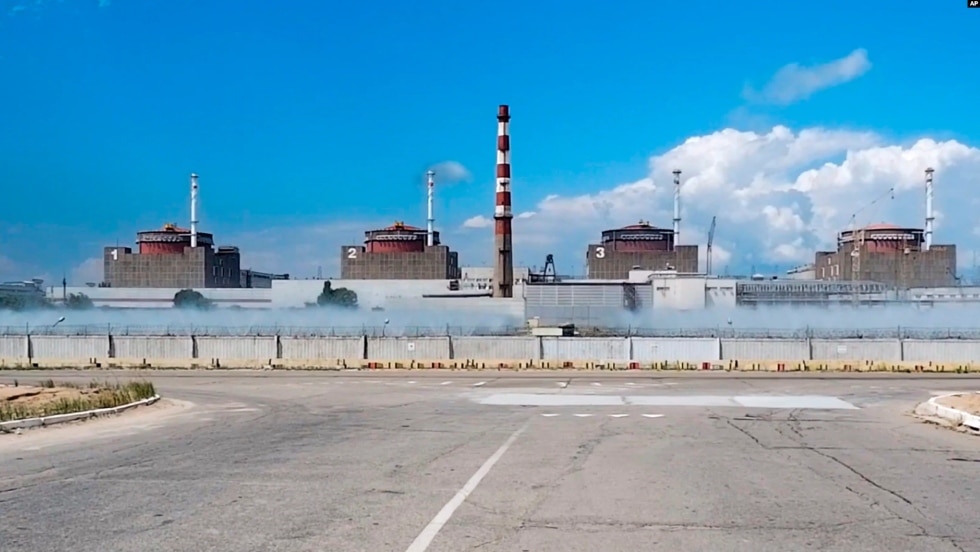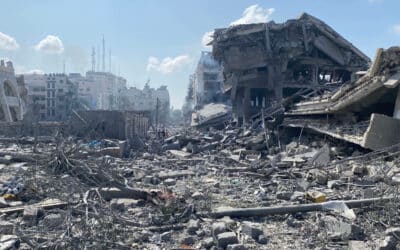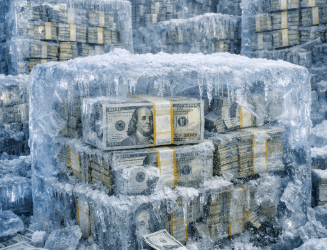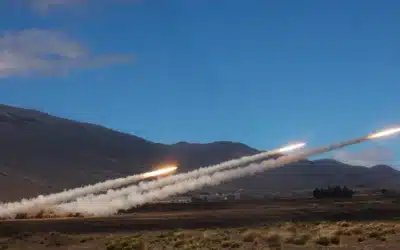With rising tensions and continued shelling at Ukraine’s Zaporizhzhia Nuclear Power Plant (ZNPP) and nearby areas, Russian President Vladimir Putin and his French counterpart Emmanuel Macron have discussed the need to send UN monitors to assess the besieged facility. Both Ukraine and Russia have accused each other of planning provocations and false flags at the site, amid dire warnings of a possible nuclear catastrophe at Europe’s largest nuclear plant.
After a call between Putin and Macron on Friday, their first in three months, the Kremlin issued a statement reiterating the Russian offer to provide security for an International Atomic Energy Agency (IAEA) mission. The statement said that Moscow “confirmed its readiness to provide the [IAEA] inspectors with the necessary assistance.”
Putin also emphasized that Ukraine’s shelling at the plant could cause a “large-scale catastrophe,” telling Macon that inspectors should visit the ZNPP “as soon as possible.” The French readout of the call said the two leaders “will speak about this subject again in the next few days following discussions between the technical teams and before the deployment of the mission.”
While Ukraine asserts that Russian forces are attacking the ZNPP, Moscow has controlled the plant and surrounding areas since March, giving it little reason to risk a major nuclear incident that would imperil ethnic Russians under its protection in the Zaporizhzhia oblast.
Though Russia controls the plant, it is still run by Ukrainian operators. Moreover, Russia has voiced ever-greater concern over the situation, calling for independent inspectors to review evidence they say will prove who is responsible for attacks at the site. For weeks, the area has seen frequent shelling, and a Russian-backed official in the oblast recently accused Kiev of attacking the power plant repeatedly with US-provided M777 howitzers. On Friday, Moscow submitted a letter to the UN Security Council warning of Kiev’s planned “provocations” at the ZNPP.
Ukraine’s Energoatom state nuclear company claims Moscow plans to switch off the functioning power blocks at the plant, cut it off from Ukraine’s power grid and reconnect it to the Russian grid in an attempt to deprive the country of a major power source. Petro Kotin, the head of Energoatom, told Reuters that decoupling and reconnecting the plant is a “technically difficult process,” and noted the Russian military is looking for diesel to keep the nuclear fuel cooling systems working once the external power supply is cut. While there are back-up diesel generators at the site, it remains unclear if the supplies are sufficient. Igor Kirillov, a Russian Defense Ministry official, said the ZNPP’s back-up support systems had been damaged as a result of attacks and might have to be shut down.
The Reuters report adds, “If cooling systems failed, the nuclear reaction would slow but a reactor would heat up very swiftly. At such high temperatures, hydrogen could be released from the zirconium cladding and the reactor could start to melt down.”
Kiev claims Russian shelling earlier this month damaged three power lines connecting the plant to Ukraine’s power grid, though Moscow said the Ukrainians were behind the shelling, in line with conflicting narratives offered by both sides throughout the conflict.
Secretary of the Russian Security Council Nikolai Patrushev has also accused Washington of encouraging Kiev to attack the plant. He says if there is a “technological disaster, its consequences will be felt in every corner of the world,” adding “Washington, London and their accomplices will bear full responsibility for that.”
For its part, Moscow has defended its military presence at the facility, with Deputy Foreign Minister Sergei Ryabkov stating that troops are there to prevent a disastrous “Chernobyl scenario.”
On Wednesday, NATO Secretary General Jens Stoltenberg declared Russia is using “the ground around the nuclear power plant as a staging area, as a platform, to launch artillery attacks on Ukrainian forces,” but Moscow denied this claim. The Russian Defense Ministry said “Russian troops have no heavy weapons either on the territory of the station or in areas around it. There are only guard units.”
Russia has alleged that Washington and Kiev plan to trigger an accident at the ZNPP deliberately, citing a threat of the core overheating. Moscow’s Defense Ministry also said Kiev’s forces were being deployed in the area to hit the plant with artillery strikes from the city of Nikopol, adding “blame for the consequences (of the strikes) will be placed on the Russian armed forces.”
Ukraine’s Defense Ministry says the Russians are planning a “large-scale terrorist attack” at the ZNPP and plan to pin it on Kiev, while US State Department spokesman Ned Price argued that false flag operations would be right out of the “Russian playbook.” Even before the war began, however, Price and other US officials notoriously accused the Russians of planning false flags in Ukraine without providing evidence. Likewise, the Pentagon is squarely blaming Russia for the ordeal, with a senior defense official telling reporters that “we see Russia’s current actions in and around this plant as really the height of irresponsibility.”
Some residents in the area have begun to flee to neighboring European countries, though only women and children are being permitted to leave. Kiev has banned men aged 18-60 from leaving the country so that they may be conscripted to keep the war going.
While Russia has rejected UN proposals for the plant be demilitarized, Bruce K. Gagnon, coordinator for the Global Network Against Weapons & Nuclear Power in Space, recently sent a letter to UN Secretary-General Antonio Guterres condemning Kiev for the dire situation.
In part, the letter reads “I have been following this dangerous situation for many weeks. It is abundantly obvious to me that the US-installed Kiev government is doing the shelling of the nuclear plant. Why would Russia want to contaminate the very region of Russian-ethnic citizens it is attempting to save from this out-of-control Kiev regime? The fact that the Ukrainian plant personnel remain on their posts, and that Russia is trying to protect the plant from a disaster, indicates its good intentions in this matter. I urge your offices to get the IAEA to the plant ASAP and you must publicly pin the blame for the shelling on the appropriate source – the Kiev regime that is clearly taking their marching orders from Washington.”
This article was originally featured at Antiwar.com and is republished with permission.
































